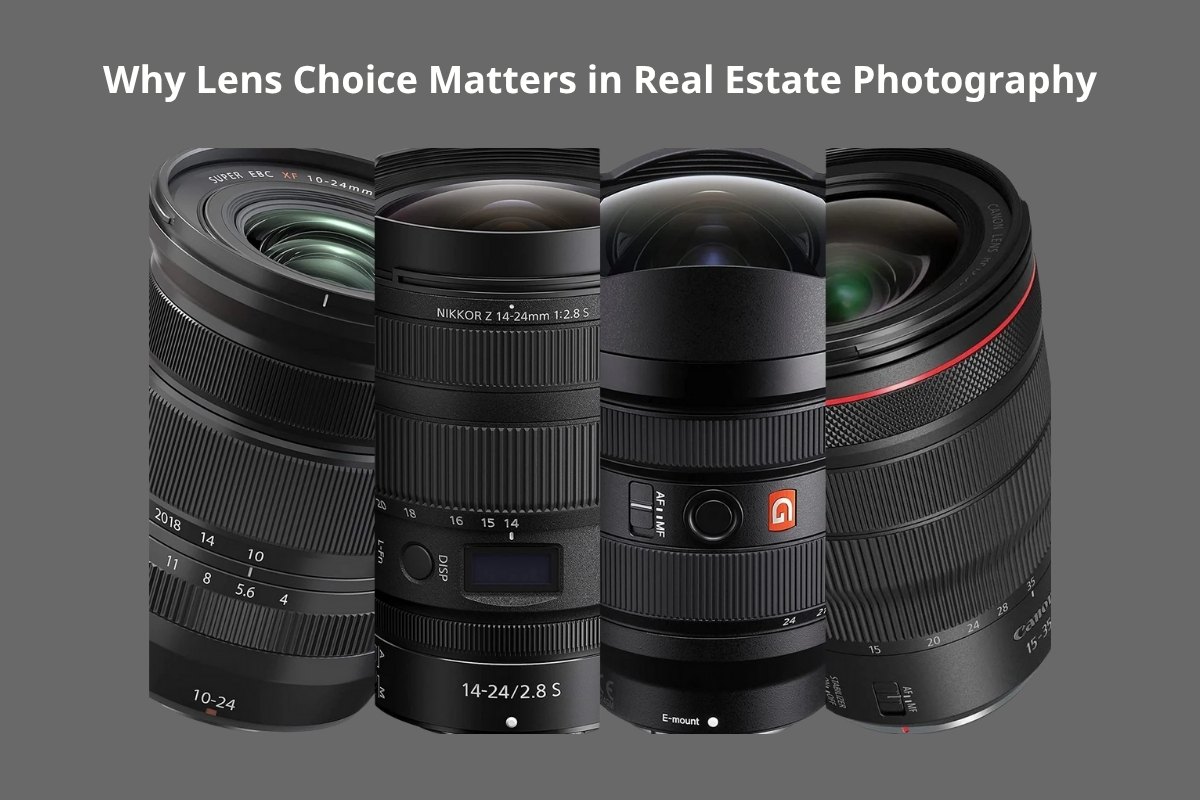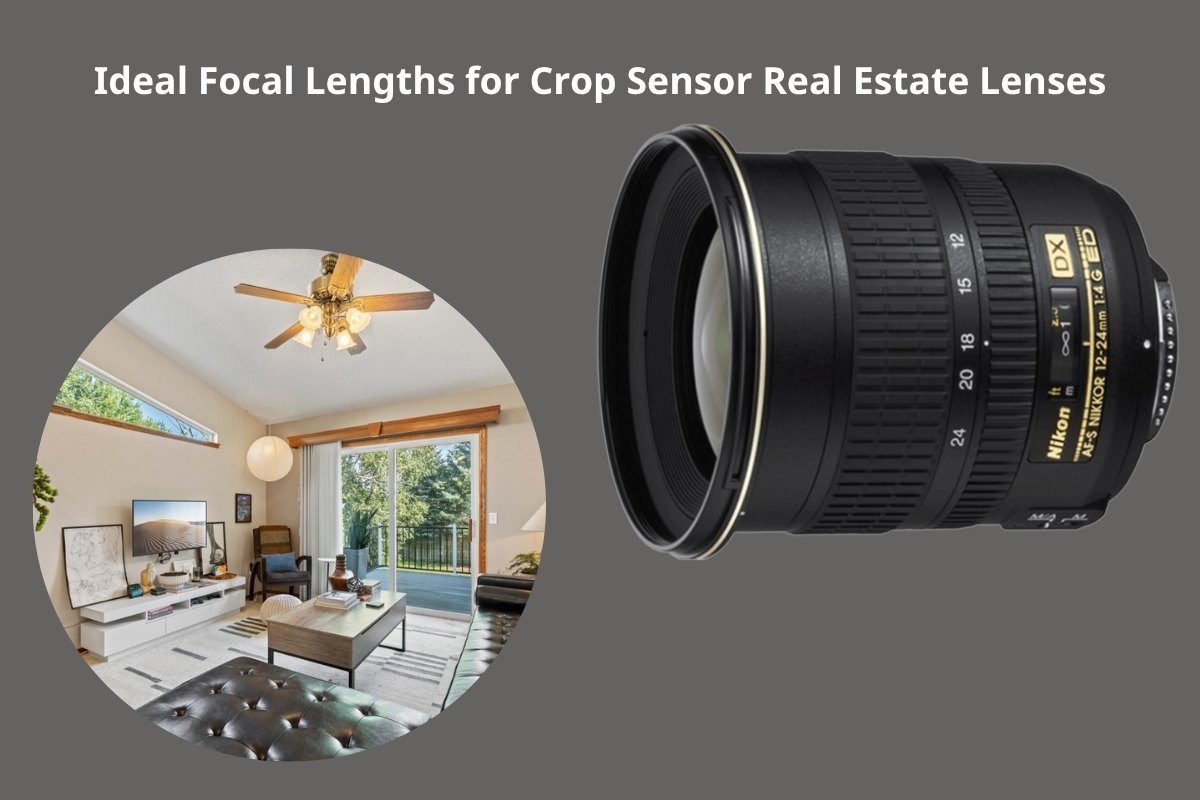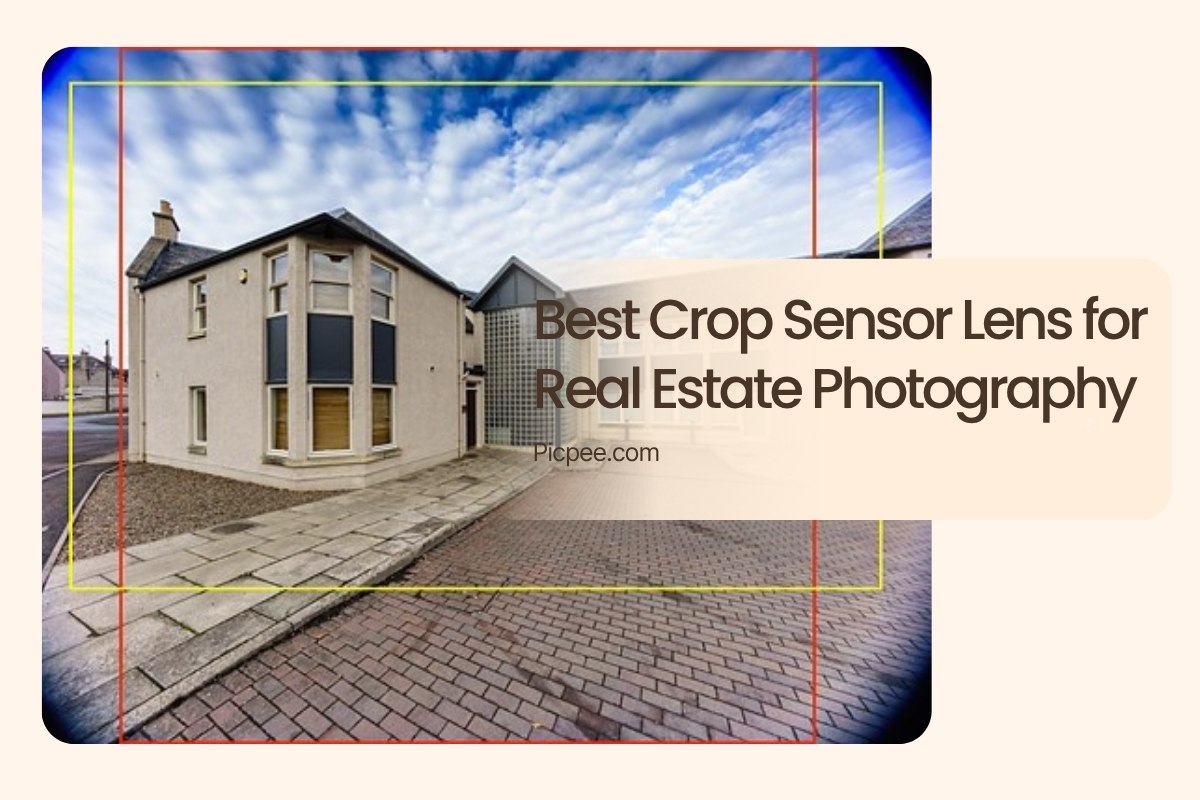Choosing the best crop sensor lens for real estate photography can dramatically influence image quality, perspective, and depth. Whether you’re photographing modern apartments, luxury villas, or cozy suburban homes, your lens determines how the property’s space feels to the viewer.
Crop sensor cameras (APS-C and Micro Four Thirds) are incredibly popular among real estate photographers for their affordability, compactness, and image quality — but pairing them with the right lens is key to achieving professional-level results.
Why Lens Choice Matters in Real Estate Photography

A high-quality lens defines how your audience perceives a property. While camera bodies provide resolution and performance, lenses determine clarity, perspective, and field of view. Especially for crop sensor cameras, which apply a crop factor (1.5x or 1.6x), choosing the correct focal length ensures accurate space representation.
Key reasons lens selection is critical:
- Accurate spatial representation: Avoids distortion that can mislead viewers about room size.
- Light performance: Wide apertures capture bright, sharp interiors even in dimly lit rooms.
- Perspective control: Helps maintain straight vertical lines and balanced composition.
- Professional consistency: Ensures uniform image tone across multiple listings.
Ideal Focal Lengths for Crop Sensor Real Estate Lenses
When photographing real estate with a crop sensor camera, choosing the right focal length determines how natural and spacious your images will look. A good focal range prevents distortion while still showcasing the full beauty of the property.

Detailed guide on focal lengths:
- 10–12mm (Ultra-Wide Range):
Ideal for small rooms, bathrooms, and corridors. It captures tight spaces efficiently but must be used carefully to avoid warped edges.
- 14–16mm (Balanced Range):
The sweet spot for most interior real estate shots. It keeps walls straight and provides a realistic sense of space without exaggeration.
- 17–18mm (Standard Wide Range):
Perfect for exteriors, open-concept living rooms, or kitchen spaces where you want to maintain natural proportions.
Pro Tip:
Avoid using lenses wider than 9mm equivalent, as excessive distortion can make rooms appear unnaturally stretched or unrealistic.
Best Crop Sensor Lenses for Real Estate Photography
Here’s a list of top-rated crop sensor lenses that excel in real estate photography across major brands.

Canon EF-S 10–18mm f/4.5–5.6 IS STM
A budget-friendly, lightweight lens designed for Canon APS-C cameras.
Why it’s great:
- Excellent ultra-wide coverage (16–29mm full-frame equivalent).
- Built-in image stabilization for handheld shots.
- Quiet STM motor for video walkthroughs.
- Perfect balance of cost and performance.
Nikon AF-P DX 10–20mm f/4.5–5.6G VR
Compact, sharp, and ideal for beginners and professionals alike.
Advantages:
- Sharpness across the frame.
- VR stabilization ensures steady images.
- Wide field of view suitable for interiors.
- Lightweight at only 230g.
Sony E 10–18mm f/4 OSS
A premium option for Sony Alpha APS-C users offering excellent optical performance.
Highlights:
- Consistent f/4 aperture.
- Optical SteadyShot stabilization.
- Outstanding color rendering and edge clarity.
- Ideal for both stills and real estate videos.
Sigma 10–20mm f/3.5 EX DC HSM
A versatile third-party lens that delivers professional results on multiple mounts (Canon, Nikon, Sony).
Features:
- Constant f/3.5 aperture for bright indoor images.
- Strong build quality with minimal distortion.
- Smooth, fast HSM autofocus.
Tokina AT-X 11–20mm f/2.8 PRO DX
Known for its excellent low-light capability and durable construction.
Key points:
- f/2.8 constant aperture — perfect for twilight interiors.
- Superb sharpness and color consistency.
- Great choice for architectural photographers.
Shooting Techniques for Crop Sensor Lenses
Even with the best crop sensor lens, mastering your shooting technique is what truly determines professional real estate photography results. Technique influences how sharp, balanced, and realistic your images appear — turning a simple photo into a visually engaging property showcase.

Use a Tripod for Stability
A tripod ensures consistent framing, perfect alignment, and prevents motion blur — especially important for interior shots in low light.
- Keeps your camera steady for long exposures.
- Maintains level horizons and symmetry in rooms.
- Enables you to bracket shots without changing composition.
Balance Natural and Artificial Light
Real estate interiors often have uneven lighting. Blending both light sources helps maintain a balanced, inviting look.
- Use window light as your base, then add flash or LED panels for shadows.
- Avoid overly bright highlights or dark corners.
- Adjust white balance to ensure color consistency throughout the home.
Shoot Between f/8 and f/11 for Sharpness
This aperture range gives the best depth of field and edge-to-edge clarity.
- Keeps both foreground and background details crisp.
- Reduces chromatic aberration and softness.
- Ideal for wide-angle architectural compositions.
Keep Verticals Straight
Crooked verticals can make rooms look distorted or unnatural. Maintaining alignment helps your images look professional and realistic.
- Use your camera’s built-in grid lines or electronic level.
- Correct minor distortions later in editing software.
- Avoid tilting the camera upward or downward when framing.
Bracket Exposures for Dynamic Range
Bracketing involves taking multiple shots at different exposures and merging them for balanced lighting.
- Captures bright windows and dark interiors in one final image.
- Prevents loss of details in shadows or highlights.
- Creates a natural, evenly lit look that appeals to buyers.
Pro Tip: If you want your bracketed images blended seamlessly, use Picpee — an editing platform trusted by real estate photographers worldwide for exposure blending, color correction, and lens distortion fixes. Picpee ensures every photo you deliver looks crisp, balanced, and professionally finished.
Post-Processing for Crop Sensor Images (Using Picpee)
Once your photos are captured, editing refines and enhances every detail. Crop sensor images can be elevated through professional post-processing to match full-frame results.
Using Picpee for real estate photo editing:
- HDR blending: Merge bracketed shots for balanced lighting.
- Perspective correction: Straighten lines and fix lens distortion.
- Color enhancement: Adjust white balance and vibrance for natural tones.
- Sky or window replacement: Make outdoor views more appealing.
- Final touch-ups: Sharpen details and prepare images for MLS or online listings.
Result: Brighter, sharper, and more realistic images that attract potential buyers instantly.
Conclusion
Finding the best crop sensor lens for real estate photography depends on balancing focal range, image quality, and usability. Wide-angle lenses between 10–18mm offer ideal coverage, while features like low distortion, sharp edges, and stabilization ensure professional-grade results.
Pair your chosen lens with solid shooting techniques and professional editing in Picpee to create stunning visuals that bring every property to life — no matter your camera setup.
 Single Exposure
Single Exposure Room Cleaning
Room Cleaning Reels
Reels Blended Brackets (HDR)
Blended Brackets (HDR) Changing Seasons
Changing Seasons Slideshows
Slideshows Flambient
Flambient Water in Pool
Water in Pool Individual
Individual 360° Image Enhancement
360° Image Enhancement Lawn Replacement
Lawn Replacement Team
Team Virtual Staging
Virtual Staging Rain to Shine
Rain to Shine Add Person
Add Person Remodel
Remodel Custom 2D
Custom 2D Remove Person
Remove Person 360° Image
360° Image Custom 3D
Custom 3D Background Replacement
Background Replacement Day to Dusk
Day to Dusk Property Video
Property Video Cut Outs
Cut Outs Day to Twilight
Day to Twilight Walkthrough Video
Walkthrough Video Change color
Change color 1–4 Items
1–4 Items




